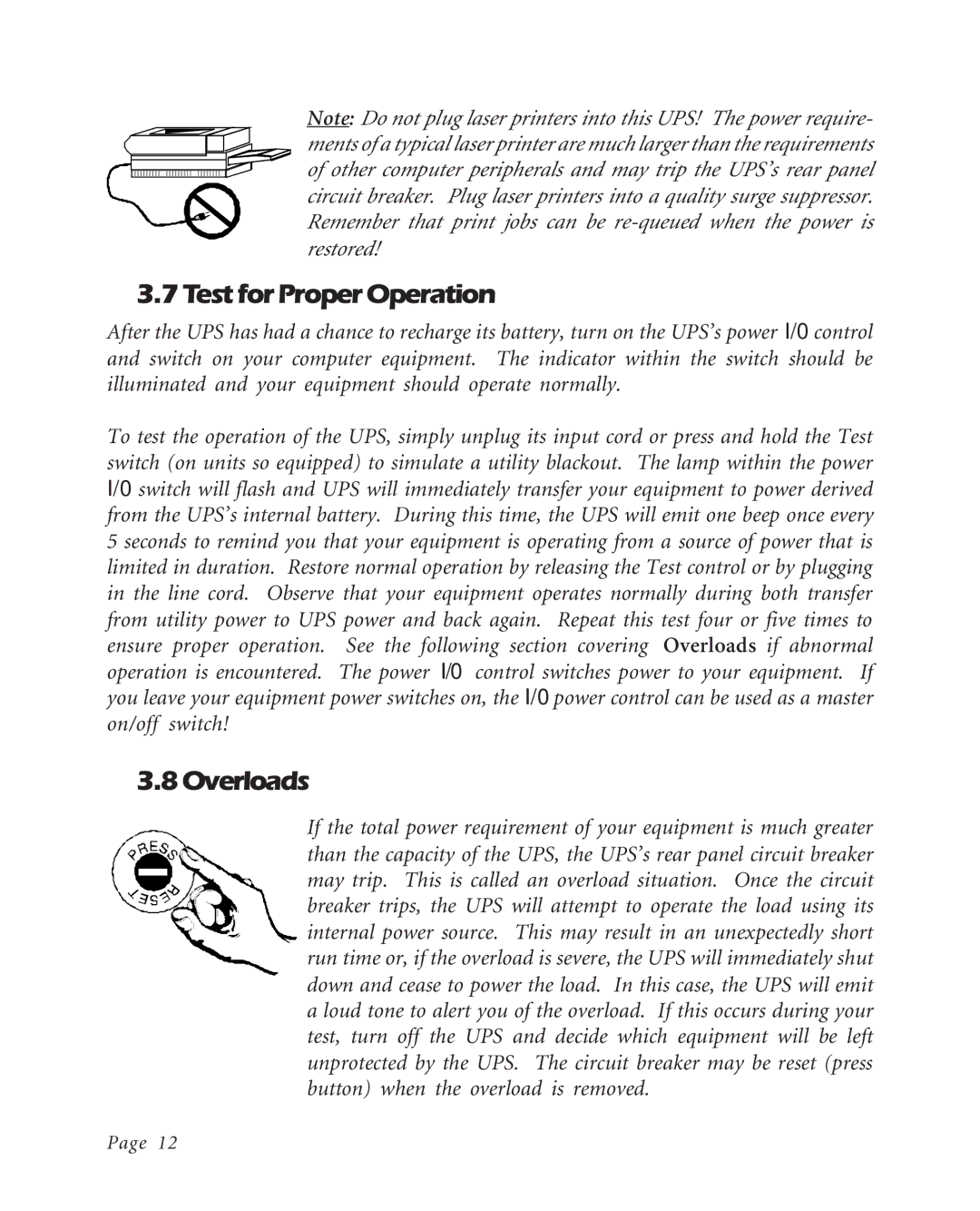K250EI, BK400EI, BK600EI specifications
American Power Conversion (APC) is renowned for its innovative power management solutions, and its uninterruptible power supplies (UPS) are a testament to this commitment. Among their product lineup, the BK600EI, BK400EI, and K250EI models are popular choices designed to provide reliable power protection to various devices and systems.The BK600EI is a 600VA UPS, ideal for protecting office equipment, personal computers, and networking devices. One of its standout features is the line-interactive technology, which provides voltage regulation during brownouts and surges. This model also supports an LCD display that offers real-time data on battery status, load capacity, and input voltage, enabling users to monitor their power environment easily. Additionally, the BK600EI has a compact design, making it suitable for space-limited areas.
Conversely, the BK400EI is a slightly lower-capacity model, rated at 400VA, making it an excellent option for smaller systems or devices with lower power requirements. Similar to the BK600EI, it employs line-interactive technology, ensuring continuous operation even during power fluctuations. This model is designed with automatic shutdown software that protects devices from data loss during power outages, a critical feature for businesses that rely on information stability and integrity.
The K250EI stands out with its 250VA capacity, catering to entry-level applications. This model is perfect for those needing basic power protection for devices such as routers, modems, or small desktop computers. The K250EI is designed with overload protection, ensuring that devices are safeguarded against electrical surges and overload conditions. The LED indicators provide a quick visual reference for the unit's operational status, reducing user effort in monitoring performance.
All three models share essential characteristics, such as a compact footprint, user-friendly interfaces, and advanced battery management technologies that improve longevity and efficiency. They also come equipped with multiple outlets to ensure users can connect various devices simultaneously. Furthermore, each model is engineered to minimize the environmental impact, boasting energy-efficient designs that contribute to reduced power consumption.
In conclusion, the APC BK600EI, BK400EI, and K250EI UPS models exemplify affordable and effective power management solutions. With their high-quality features, advanced technologies, and protective characteristics, they are well-suited for home offices, small businesses, or individual users seeking reliable power backup and protection.

